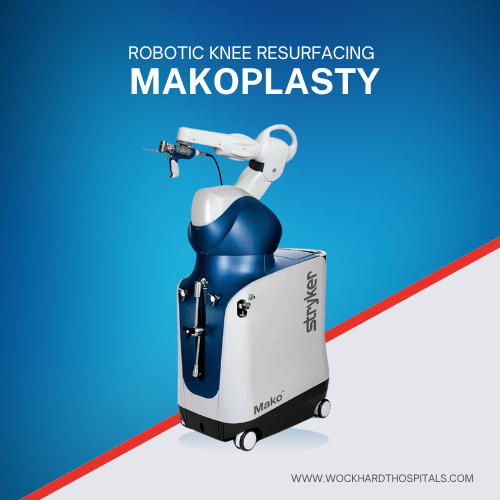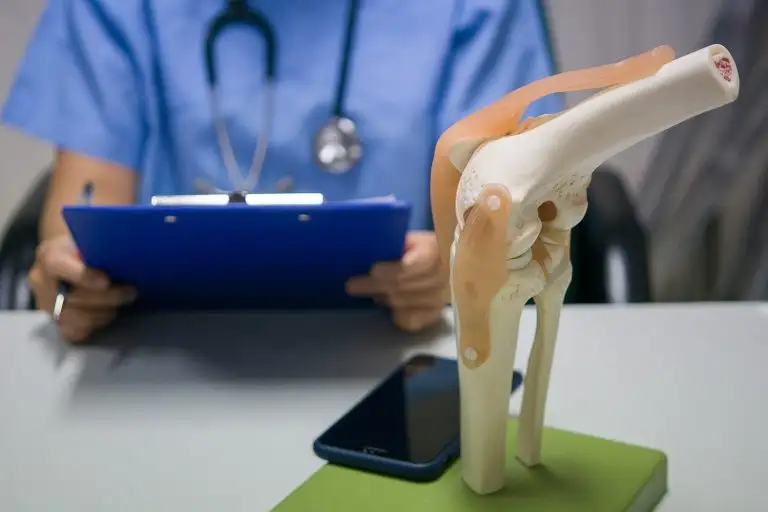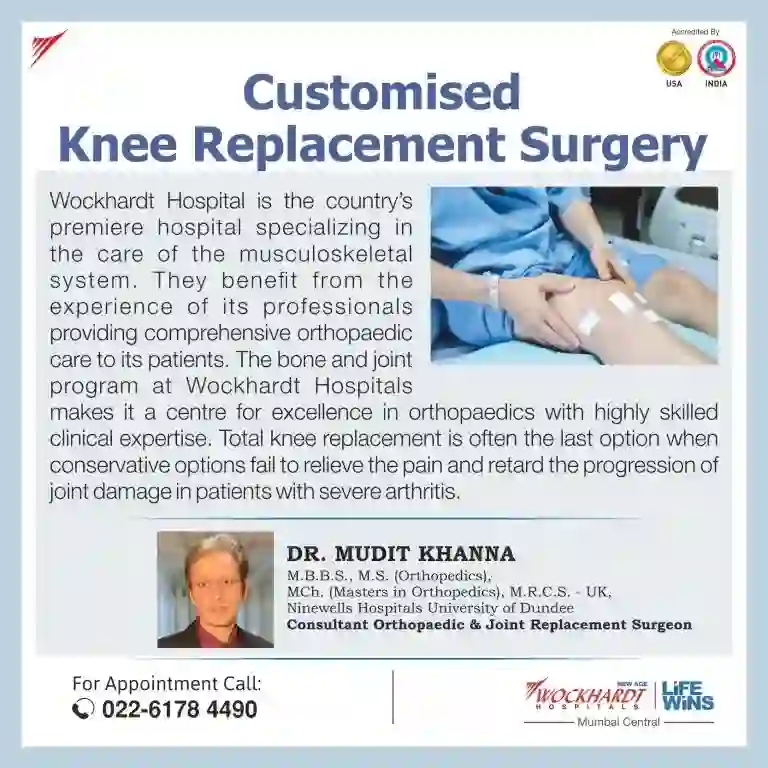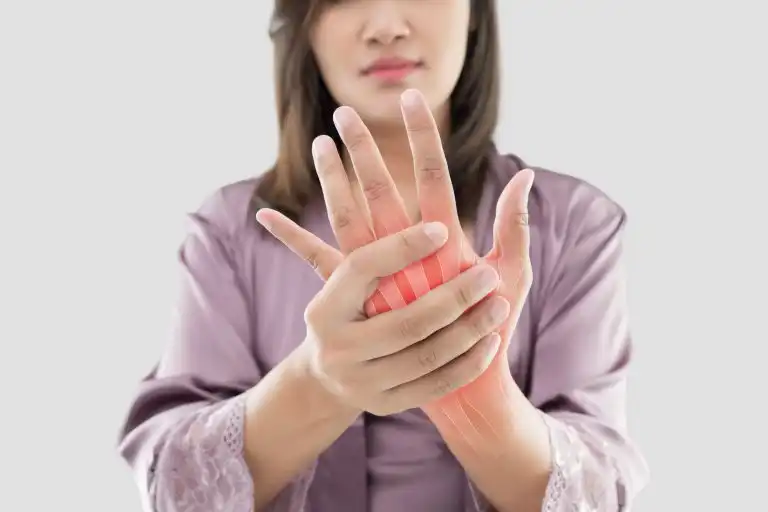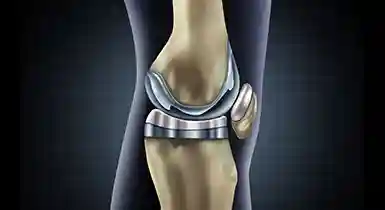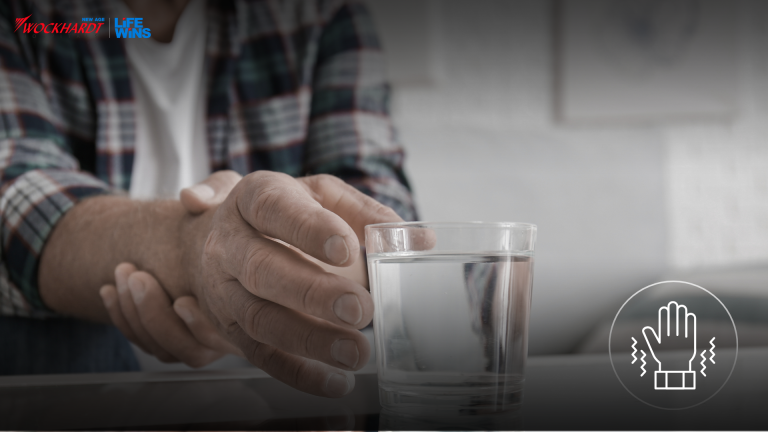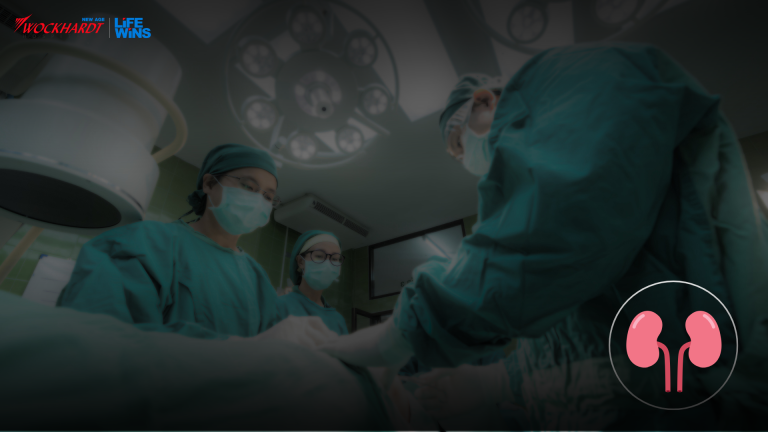Home » Medical Procedure » Caesarean section delivery
cesarean
delivery Procedure
What is a Cesarean
Section Delivery?
A C-Section or Cesarean delivery occurs when a baby is born through a surgical procedure, not the vagina. The surgery requires incisions in the mother’s abdomen and uterus. A C-Section delivery is typically performed when vaginal delivery is not possible or not safe for the mother or the baby. It may be planned beforehand due to certain complications associated with pregnancy or may also be done due to an emergency situation.
A C-Section delivery is usually performed under regional anaesthesia. This numbs the lower half of the mother’s body while allowing her to remain conscious. After the C-Section delivery, the mother is carefully monitored in a recovery room for some time while the baby is sent for her usual post-delivery examinations.
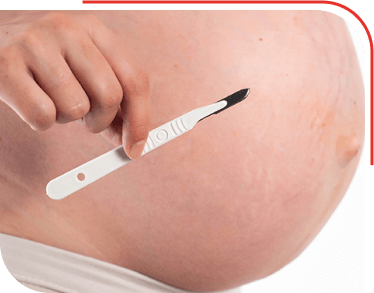
Renowned Lower Section Caesarean
Section (LSCS) Surgeons
at Wockhardt Hospitals
- Mumbai Central
- Mira Road
- Nagpur
- Rajkot
When would I need a C-section delivery?
A woman may need a C-Section delivery in different case scenarios. These can either be planned beforehand due to pregnancy complications or can be an emergency decision made by the doctors to keep the baby and the mother safe in a critical situation.
Some cases in which you can have a cesarean birth planned ahead include:
- Baby presenting in breech presentations
- Previous C-Section delivery
- Baby’s head too large to pass through the cervix (cephalopelvic disproportion)
- Multiple babies (multifetal pregenancy associated with complications in pregnancy.
- Baby with a congenital anomaly leading to cephalopelvic disproportion
- Placenta is attached too low in your uterus (placenta previa)
- Baby in transverse lie
- The mother has existing medical conditions that may make a vaginal delivery risky.
Some cases in which you may be required to have an emergency C-Section delivery include:
- The baby is in distress or has an irregular heartbeat
- The baby has umbilical cord compression
- Labour is not progressing well
- The umbilical cord has prolapsed or exited the uterus before the baby
- The placenta has separated from the uterine wall before the baby can be delivered.
What are the Benefits
of a C-section Birth?
A Cesarean delivery is a major surgery that is performed by doctors when it is a safer option than a vaginal delivery. The most important benefit of a C-section is the safe delivery of the baby and the safety of the mother. Some other benefits may include:
- Lowered risk of birth injuries
- Prevention of prolonged labour
- Lower risk of pelvic floor damage
- Control over the birth date and timing
- Reduced risk of incontinence and sexual dysfunction
Tests required before a
Cesarean Operation
The mother may need to undergo certain tests before the surgery. These tests are done to ensure the safety and health of both the mother and the baby. They also help the doctors plan the C-Section and be prepared for any complications during the surgery. The specific tests and evaluations can vary depending on the individual circumstances and medical history of the mother.
Some tests before a cesarean operation include:
- Complete blood count: A complete blood count is performed to check the mother's blood type, Rh factor, and haemoglobin levels.
- Ultrasound: An ultrasound scan may be performed to check the baby's size, position, and any abnormalities.
- Fetal heart rate monitoring: This is done during a vaginal birth as well. Fetal heart rate monitoring helps doctors assess the baby's heart rate and ensure that the baby is healthy and not in distress.
- Group B streptococcus (GBS) screening: GBS bacteria can cause sepsis in newborns. This test may be done if the woman has previously had a baby with GBS infection, or if GBS is found in her urine or vagina swab during the current pregnancy.
In addition to these tests, doctors will also perform a complete physical examination and review the medical history of the mother. Some women may be prescribed additional tests based on their medical history or current complications in the pregnancy.
What happens before
Cesarean Delivery?
If you have a planned C-Section delivery, the doctor will have a date and time scheduled beforehand for your surgery. This will help you pack for the hospital, inform family and friends and prepare yourself mentally for the surgery. For a planned C-Section delivery, you will be asked to fast a few hours before the surgery. If you have been told to undergo an emergency C-Section delivery, there is no need to panic.
- The doctors will explain to you about the next steps.
- You will be asked to sign a consent form.
- You will be taken to a room to prepare for the surgery.
- You will be asked to change into the hospital gown.
- Your abdomen will be cleansed. If you have any hair in the region, they are trimmed.
- Typically, you will be given regional anaesthesia in your lower back. This will numb your lower body.
- A catheter will be placed into your bladder to collect urine.
During Procedure?
Once the preoperative procedures are completed, the following will occur:
- The abdominal area will undergo a sanitization process with an antiseptic. The anesthesiologist will check if the lower body has numbed.
- Additionally, an oxygen mask may be administered over your mouth and nose to boost the oxygen levels.
- The medical practitioner will then cover the incision site, legs, and chest with sterile drapes. Finally, a sterile curtain or drape will be elevated between your head and lower body by the healthcare team.
- The surgeon will make a uterine incision. This can be done horizontally or vertically, depending on the individual case. Horizontal incisions are mostly preferred as there is a lower risk of excessive blood loss and rupture. Horizontal incisions also heal quicker.
- The surgeon then accesses the uterus within which is the amniotic sac and delivers the baby by cutting the umbilical cord.
- Medication will be administered through your IV to aid the contraction of the uterus, which helps in the expulsion of the placenta. These medications are called uterotonics.
- The placenta will then be removed.
- To close the incision in the uterine muscle and relocate the uterus in the pelvic cavity, sutures will be employed.
- The muscle and tissue layers will be closed using sutures, followed by the skin incision with sutures or surgical staples, by the doctor.
- A sterile bandage will be applied by your surgeon on the skin.
After Procedure?
Once the C-Section delivery is complete:
- You will be shifted to the recovery room, where you will be monitored closely.
- During this time, you will have the option to keep the baby with you or they will be monitored in a nursery.
- As the anaesthesia wears off, you may begin to feel pain on the surgical site. Intravenous pain medication and antibiotics will be administered as part of your treatment plan.
- You may also be given stool softeners and blood thinners.
You will also be given fluids to drink and will be encouraged to walk the next day. The catheter is usually removed the next day.
How to Prepare
for a C-Section Delivery?
If you have been told by the doctor to go for a Cesarean Section procedure, there is no need to panic. Talk to the doctor freely about the procedure with your healthcare provider, including the reasons why a C-Section delivery may be necessary, potential risks and benefits, and what to expect during and after the surgery. Here are a few things to help you prepare for a planned C-section:
- Talk to your close family members to discuss how they can help, who will stay with you in the hospital, etc.
- Pack a hospital bag with essentials for both you and your baby, such as comfortable clothing, toiletries, and necessary baby items.
- You may be asked to refrain from eating or drinking for 6 -8 hours before the procedure.
- Most importantly, do not stress out. It is normal to feel several emotions but try to relax to welcome the baby with a happy smile.
How can you recover
quickly after Cesarean Surgery?
There are many things you can do for a quicker recovery:
- Take good care of yourself. Rest well. Do not be in a hurry to be up and about.
- Eat well and stay hydrated.
- Get someone to help with the baby so you can get enough sleep for better healing.
- Take it easy and avoid strenuous exercises.
- Take prescribed medications.
- Avoid having sex or putting anything in the vagina for at least 6 weeks. You may also want to talk to the doctor about suitable birth control options.
What are the
risks involved in a C-section?
Cesarean deliveries are becoming increasingly common all over the world and are a major form of surgery. While in general, C-Section delivery are considered safe, they do carry some risks, such as:
- Infection
- Excessive bleeding
- Embolism (clot forming and entering the bloodstream)
- Damage to the internal organs
- Weakened uterine wall
- Allergic reaction to the anaesthesia
- Increased risk of complications in future pregnancies like incidence of morbidly adherent placenta with increasing number of cesarean deliveries.
Talk with our expert
Renowned Knee Surgeons
at Wockhardt Hospitals

Dr Amit Chakraborty
Oncology
Mumbai

Dr Amit Chakraborty
Oncology
Mumbai

Dr Amit Chakraborty
Oncology
Mumbai

Dr Amit Chakraborty
Oncology
Mumbai

Dr Amit Chakraborty
Oncology
Mumbai

Dr Amit Chakraborty
Oncology
Mumbai

Dr Amit Chakraborty
Oncology
Mumbai

Dr Amit Chakraborty
Oncology
Mumbai
Life Wins Stories
The vision and leadership of Wockhardt’s Founders have been instrumental in shaping the organisation’s ethos of providing high-quality and affordable healthcare services to patients worldwide. Read and listen to the heartfelt experiences of our patients as they share their stories about the exceptional care they received at Wockhardt Hospitals.



Paresh Vyas
Excellent facility with renowned Cardiologists like Dr Dharmesh R Solanki. Very humble doctors, and good staff. Value for money.

Meena Kothari
Excellent facility with renowned Cardiologists like Dr Dharmesh R Solanki. Very humble doctors, and good staff. Value for money.
Life Wins Stories

Paresh Vyas
Excellent facility with renowned Cardiologists like Dr Dharmesh R Solanki. Very humble doctors, and good staff. Value for money.

Meena Kothari
Excellent facility with renowned Cardiologists like Dr Dharmesh R Solanki. Very humble doctors, and good staff. Value for money.















